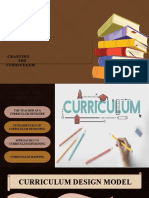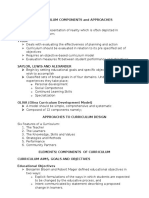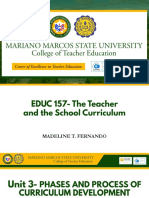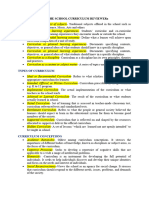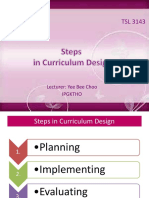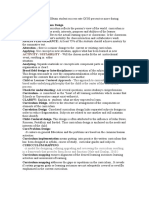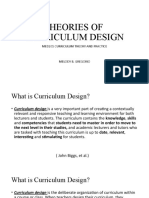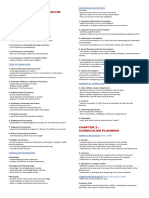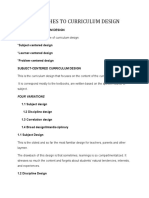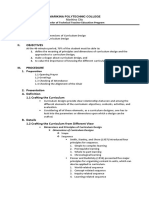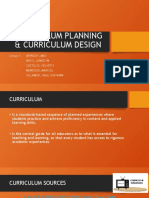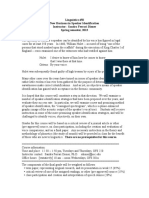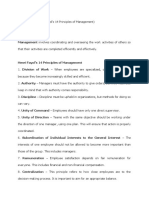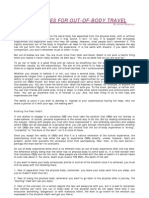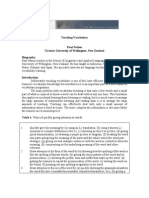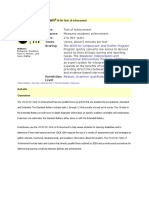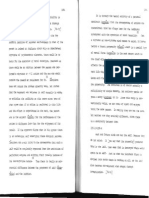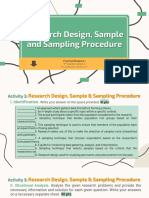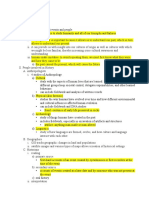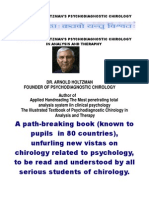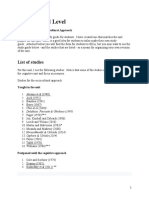0% found this document useful (0 votes)
57 views9 pagesCurriculum Design & Development Guide
The document outlines various types and aspects of curriculum design. It discusses recommended, written, taught, supported, assessed, and hidden curriculums. It also covers curriculum development processes including planning, organization, implementation, and evaluation. Different curriculum designs are presented such as subject-centered, learner-centered, problem-centered, and backward design. Key components and criteria for curriculum design like objectives, content, evaluation, scope, and validity are also summarized.
Uploaded by
Sarah Jajimin JulCopyright
© © All Rights Reserved
We take content rights seriously. If you suspect this is your content, claim it here.
Available Formats
Download as DOCX, PDF, TXT or read online on Scribd
0% found this document useful (0 votes)
57 views9 pagesCurriculum Design & Development Guide
The document outlines various types and aspects of curriculum design. It discusses recommended, written, taught, supported, assessed, and hidden curriculums. It also covers curriculum development processes including planning, organization, implementation, and evaluation. Different curriculum designs are presented such as subject-centered, learner-centered, problem-centered, and backward design. Key components and criteria for curriculum design like objectives, content, evaluation, scope, and validity are also summarized.
Uploaded by
Sarah Jajimin JulCopyright
© © All Rights Reserved
We take content rights seriously. If you suspect this is your content, claim it here.
Available Formats
Download as DOCX, PDF, TXT or read online on Scribd
/ 9


